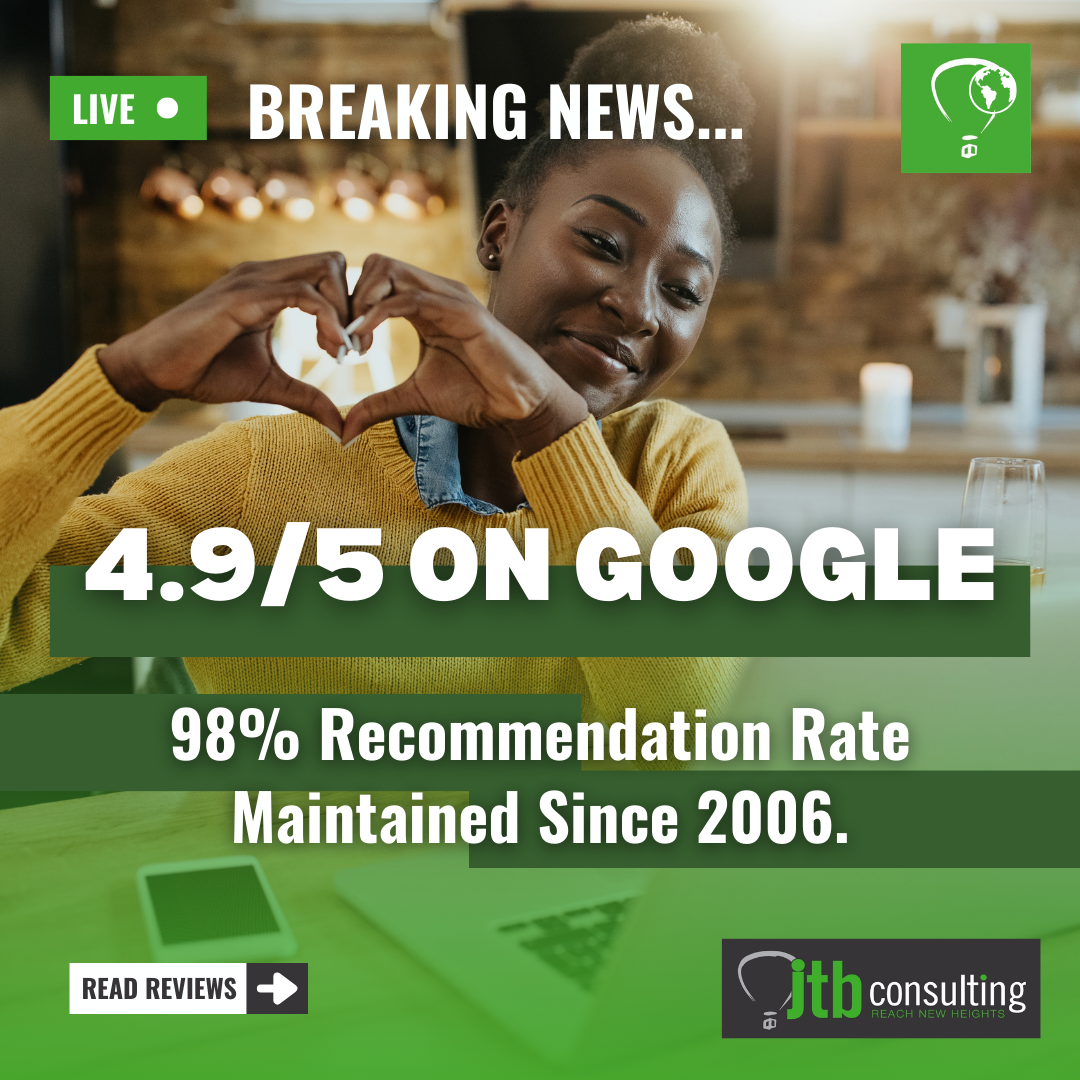A PESTEL Analysis is a strategic business tool that allows organisations to understand how various elements might impact their businesses now and in the future. PESTEL stands for the six main external factors that can influence a business: Political factors, Economic factors, Social factors, Technological factors, Environmental factors, and Legal factors. Each concept is an external factor representing opportunities and threats to your organisation.
What is PESTEL Analysis, and when should you do it?
Organisations use PESTEL analysis to discover, evaluate, organise, and track the macroeconomic factors underlying business outcomes. PESTEL is useful because it helps inform strategic planning, budget allocation, and market research. You can do a PESTEL Analysis any time you’d like to assess where you are and what you’re likely to experience in the future. This exercise is especially useful when planning marketing, organisational change, business and product development, and research.
In 2014, Dr. Thommie Burger, Founder of JTB Consulting, designed a unique PESTEL Analysis Tool as part of his Ph.D. Dissertation on “Entrepreneurship and the Importance of Internal and External Analysis of Startups.” Whether you have a startup business or already manage an existing business, conducting a PESTEL Analysis is an integral part of your planning. This is where JTB Consulting can help.
PESTEL Analysis Example ― Factor #1 ― POLITICAL
- Government policies: How and to what extent does the government intervene in the economy
- Political stability: The stability of the government and how this can affect businesses
- Taxation: Corporate taxation and other fiscal policy initiatives
- Trade barriers: Regulations that governments put in place to protect domestic businesses
- International relations: A country’s relationships with other nations, which can impact a business’s ability to export and import goods and services
PESTEL Analysis Example ― Factor #2 ― ECONOMIC
For businesses, economic factors can prove beneficial or detrimental to success. For example, industry growth, seasonal changes, labour costs, economic trends, seasonal strikes, growth rates, exchange rates, interest rates, unemployment rates, consumers’ disposable income, taxation, and inflation carry a sizable potential impact on the business. When evaluating the economic aspect of a PESTEL Analysis, you should ask: What economic factors might impact our company’s pricing, revenue, and costs?
PESTEL Analysis Example ― Factor #3 ― SOCIAL
Social attitudes, trends, and behaviours might influence your business, customers, and market. For instance, a business can heavily impact attitudes and beliefs about money, customer service, work, leisure, lifestyle trends, population growth, demographics, family size, and immigration. When evaluating the social aspect of a PESTEL Analysis, you should ask: How do our customers’ and potential customers’ demographic trends and values influence their buying habits?
PESTEL Analysis Example ― Factor #4 ― TECHNOLOGICAL
Technology can affect your organisation’s ability to build, market, and ship products and services. For example, legislation around technology, consumer access to technology, research and development, and technology and communications infrastructure impact most businesses and organisations. When evaluating the technological aspect of a PESTEL Analysis, you should ask: How might existing or future technology impact our growth and success?

PESTEL Analysis Example ― Factor #5 ― ENVIRONMENTAL
Certain industries, such as tourism, agriculture, and farming, are sensitive to environmental changes. For instance, climate change, weather, and geographic location might influence a company’s business decisions. When evaluating the environmental aspect of a PESTEL Analysis, you should ask: How might environmental changes help or hinder our company’s ability to operate?
PESTEL Analysis Example ― Factor #6 ― LEGAL
Myriad legal factors can affect your organisation’s ability to operate. For example, consumer laws, labour laws, and safety standards might impact the organisation. When evaluating the legal aspect of a PESTEL Analysis, you should ask: How might existing or future legal frameworks impact our organization’s ability to operate?
As long as humans have existed, there has been the desire to explore and start new things. It is all part of our Human Nature. Starting a New Business is both a Daunting and Exciting Journey. You Don’t have to Walk the Road Alone! Whether you have an existing business or are a startup, let us be part of this Important Journey. Let JTB Consulting, South Africa’s #1 Business Plan Writers, help you.
Starting a New Business? Need some Guidance on What Business to Start?
If you’re contemplating starting a business, it’s crucial to consider whether your idea addresses a gap in how people live or work. Identifying an unmet need and a clear target market could be the foundation of a promising venture. But where do you begin when searching for a great small business idea? At JTB Consulting, we have compiled a List of Over 45 Innovative and Profitable Business Ideas You Can Start in 2025, designed to inspire your entrepreneurial journey and set you on the path to success.
To make starting your business even easier, we have partnered with Best Financial Models, which offers ready-made financial projection models and financial model templates for most of these business ideas. These tools are invaluable for planning, budgeting, and applying for funding, helping you turn your vision into a bankable business reality.
Do you Need a Financial Model Template for your Business?
Are you ready to unlock the potential of your business with financial clarity and precision? At Best Financial Models, we take the guesswork out of financial planning, empowering you with expertly crafted templates designed for businesses of every size and industry. Whether you’re seeking funding, scaling your operations, or preparing for strategic decisions, our models provide the insights you need to succeed.
Imagine having a tool that’s easy to use, customisable to your business, and backed by professional expertise. That’s exactly what our financial models offer—whether it’s projecting cash flow, valuing your business, or developing a comprehensive business plan. Each template is built with intuitive dashboards, pre-populated examples, and step-by-step instructions so that you can focus on growth, not spreadsheets.
Best Financial Models is the first Financial Model Template Marketplace in Africa, founded by South Africans. Why Choose Them?
- Expertly Designed for Success: Our models are trusted by entrepreneurs, analysts, and investors worldwide.
- Save Time and Effort: Start planning immediately with ready-made templates that are easy to customise.
- Maximise Your Impact: Present professional, accurate financials to stakeholders and investors.
- Tailored to Your Needs: From startups to established enterprises, we have a model for every stage and sector.
We have more than 60 Industry-Specific Financial Model Templates Available. It’s time to turn your financial data into actionable strategies. Visit Best Financial Models today to explore our comprehensive library of financial templates. Whether you need a startup financial projection, a valuation model, or a cash flow forecast, we’ve got you covered.
What are the uses of PESTEL Analysis?
PESTEL Analysis is useful for businessmen as it keeps them alert about future threats and lets them know about new and beneficial opportunities. We use PESTEL Analysis for:
- Business planning. PESTEL analysis is used for business planning after analyzing the business’s internal environment and the impact of external factors.
- Tasks and people planning and management. By understanding the time norms and legal and economic factors, you can better divide the tasks and assign them to the relevant person. By grasping the situation, you can create a competitive environment.
- Planning marketing strategies. The external environment decides your company’s destination, enabling you to plan effective market strategies.
- Strategy development for products. Knowing the market’s demand enables you to work better for product development.
- Change at the organisational level. PESTEL Analysis is used to bring about change at the organisational level after observing changes in tax, social norms, and some legal interpretations.
How do you develop or execute the PESTEL Analysis process?
Before you start working on strategy development, you should brainstorm external factors that can affect your business. So, sit with your team or groups and revise the 6 external factors in the PESTEL Analysis.
Discuss these factors in depth and analyse their impact on the business. Doing so can better understand the need for time and develop suitable strategies.
Idealise the opportunities you can have. After going through the PESTEL Analysis, you will know where your company is standing and what opportunities you may have in the future to improve it. Look for feasible factor situations and use them in your favour. For example, if you notice product trends in a specific age group, you can take advantage of them and manufacture the products according to their choices and needs.
Also, look for the threats you may face. You should look for opportunities and risks or threats that can hinder your success roadmap. When you identify and enlist future threats, you can find the best ways to deal with them proactively and smooth your way to success.
It’s time to act. In the end, when you know what factors are affecting to what extent, how you cause them to get maximum opportunities, and which threats you can face in the future, you can design the strategies. After designing the strategies to make your future bright in the business market, you can take action to remove the hurdles and look forward to the best opportunities to enhance your productivity.
Main advantages of PESTEL Analysis:
- It’s a simple framework.
- It facilitates an understanding of the wider business environment.
- It encourages the development of external and strategic thinking.
- It can enable an organisation to anticipate future business threats and take action to avoid or minimise their impact.
- It can enable an organisation to spot business opportunities and exploit them fully.
Some disadvantages of PESTEL Analysis:
- Some PESTEL Analysis users oversimplify the amount of data used for decisions — using insufficient data is easy.
- The risk of capturing too much data may lead to paralysis by analysis.
- The data may be based on assumptions that later prove unfounded.
- The pace of change makes it increasingly difficult to anticipate future developments that may affect an organisation.
- To be effective, the process needs to be repeated regularly.
Some useful tips for carrying out a PESTEL Analysis:
- Collaborating; multiple perspectives can identify more risks.
- Use expertise and resources within the organisation.
- Use PESTEL Analysis alongside other techniques, such as SWOT Analysis, Porter’s Five Forces, Competitor Analysis, and Customer Analysis.
- Incorporate a PESTEL Analysis into an ongoing process for monitoring changes in the business environment.
- Avoid collecting vast amounts of detailed information without analysing and understanding your findings appropriately.
- Don’t jump to conclusions about the future based on the past or present.
How do you use PESTEL Analysis for a business?
It’s beneficial to do a PESTEL analysis for your business sooner rather than later. The environments can (and will) change. If you’re privy to the details, you may even be able to predict changes and respond appropriately.
But if you wait and don’t see the changes, you’ll scramble to align your business with the newly changed environment. If the changes are negative, this can severely impact the profits and success of your company. We want to avoid that. That’s why you’ll do a PESTEL Analysis first. Doing the analysis requires seeking sources of information. You’ll need time to go through each of the six environments. – Dr Thommie Burger
Not sure how to start? Here are a few simple statements (that you can ask as a Question) to get the ball rolling:
| Broad-Based Black Economic Empowerment (B-BBEE) legislation has an impact on our business |
| The geopolitical environment lends itself to further economic uncertainty and challenges |
| The current government economic policies support economic growth |
| The banking and financial services system allows for transparent and accessible transactional business. |
| The broadband infrastructure is lacking and below global standards |
| Our customers and suppliers are enjoying growing bargaining power |
| Continuous seasonal labour strike action negatively impacts the economy |
| Press and publicity are essential to how our stakeholders perceive us. |
| The growing middle-class market segment is important |
| New technology is making it more difficult for us to do business |
| We are spending much less on technology research and development than our competitors |
| The Internet and the “Internet of Things” are vital to knowledge attainment and management |
| Stakeholders and investors value and are very focused on the environment |
| We have a formal waste management policy |
| The local weather conditions have an impact on our business |
| Global regulations with a local impact exist |
| The Labour Relations Act (LRA) places the burden on the employer |
| The level of taxes on doing business is increasing |
These are just quick introductory questions/statements. New questions may pop up as you uncover the necessary information to answer each one. You can choose to answer them by researching further (recommended) or not. The beauty of PESTEL Analysis is that it’s as simple or intricate as you desire.
Your results can be used to shape your business plan.

Using the PESTEL Analysis in a Business Plan
A business plan embodies everything about your business — who you are, your mission statement, services or products, and operational and financial objectives. If you run a business, then it’s imperative to have a business plan. Whether you’re just starting your company, looking to expand, searching for a business partner, or looking for new investors — your business plan explains who you are, what you do, and why anyone should care all in one place.
You may be surprised at how many business owners don’t have a plan. Without it, those people will likely struggle to run a successful business. The owners often jump into starting a business without thinking it through, and that will slowly eat at the company.
You don’t want anything to stand in the way of your business’s success. Keep in mind that a business plan can have many moving parts, and not every part is as necessary as others (depending on your goals, industry, and type of business you run).
However, you should use PESTEL Analysis for your business plan. Use it to shape (or reshape) your plan or include it directly within it. By including it, you’ve shown that you are a professional. You understand your industry inside and out (thanks to PESTEL Analysis). And you understand how to use the environments to your advantage.
When should you incorporate PESTEL Analysis into your business plan?
A very basic business plan outline will have the following:
- Executive summary
- Missions statement (or overview of your company)
- Marketing strategy
- Financial inquisitions
- Operation costs
Notice how PESTEL Analysis isn’t listed. This is because PESTEL is often considered “extra”, — but it’s good to be extra. If you don’t have the time (as in, you have 3 days to write a business plan before meeting with swanky investors), this is the minimum your plan should have.
Another reason you may not see PESTEL Analysis in any business plan samples is that many business owners don’t know about it. This gives you an advantage—you have something they don’t, which can lead you straight down the path to profits and sales.
But since most don’t know it (and thus, don’t include it in their business plan), it may be difficult to see where it fits. The truth is, you can fit it anywhere — but you’d rather your business plan flow. It’ll make more sense for anyone reading it.
In this case, you’d likely insert PESTEL Analysis before your marketing strategy. The analysis will likely influence your strategy. Showcasing it before can explain the choices you’ve made for your marketing strategy.
If you’re adding more to the business plan, like HR information, a business exit strategy, or an organisation of management, still insert the PESTEL information before anything related to marketing. Your PESTEL Analysis results may also include your exit strategy, HR decisions, and management choices because they are connected to policies, laws, and the economy (three of the six environments of PESTEL).
It’s that simple!
PESTLE Analysis Defined
PESTLE analysis is a strategic framework used to evaluate and understand the external macro-environmental factors that can impact a business or industry. It stands for Political, Economic, Social, Technological, Legal, and Environmental factors. By systematically examining these aspects, startups can gain valuable insights into the opportunities and threats they may encounter.
- Political Factors: Startups should consider the political landscape, including government policies, stability, and regulations. Questions might include: Are there government incentives for startups in your industry? Are there any trade restrictions or tariffs that could affect your supply chain?
- Economic Factors: Economic factors encompass economic growth, inflation, exchange rates, and consumer spending. Startups should assess how these factors affect their pricing strategies, market demand, and financial projections.
- Social Factors: Understanding societal trends, demographics, and cultural factors is crucial. For example, how are consumer preferences changing? Are there shifts in lifestyle choices that could impact your product or service?
- Technological Factors: In the digital age, technological considerations are paramount. Startups should evaluate the latest technological advancements and how they can be leveraged for innovation or disruption within their industry.
- Legal Factors: These include regulations, patents, intellectual property rights, and compliance requirements. Ensure that your startup complies with all relevant laws and understands the potential legal challenges within your sector.
- Environmental Factors: Environmental factors are increasingly significant for businesses. Consider sustainability, climate change, and how your startup can reduce its environmental footprint.
Application of the PESTLE (PESTEL) Analysis for Startups
- Market Entry Strategy: Use PESTLE to assess the new market’s feasibility. Analyse the political stability, economic potential, and regulatory environment.
- Risk Assessment: Identify potential risks and opportunities. For instance, understanding political instability can help plan for contingencies.
- Innovation: Monitor technological advancements to stay ahead. Explore how emerging technologies can disrupt or enhance your product or service.
- Marketing and Product Development: Social factors can guide product design and marketing strategies. Align your offerings with current trends and consumer preferences.
- Compliance: Ensure that your startup adheres to all legal requirements. Failure to do so can result in costly setbacks.
- Sustainability: Consider environmental factors not only as a responsibility but as a market differentiator. Sustainability can be a competitive advantage.
- Financial Projections: Economic factors directly impact financial models. Regularly update your financial projections to reflect changes in the economic landscape.
In conclusion, PESTLE analysis is a powerful tool for startups, providing a structured approach to assess external factors that influence their success. By conducting a thorough analysis and regularly updating it, startups can make informed decisions, mitigate risks, and seize opportunities in an ever-evolving business environment.







